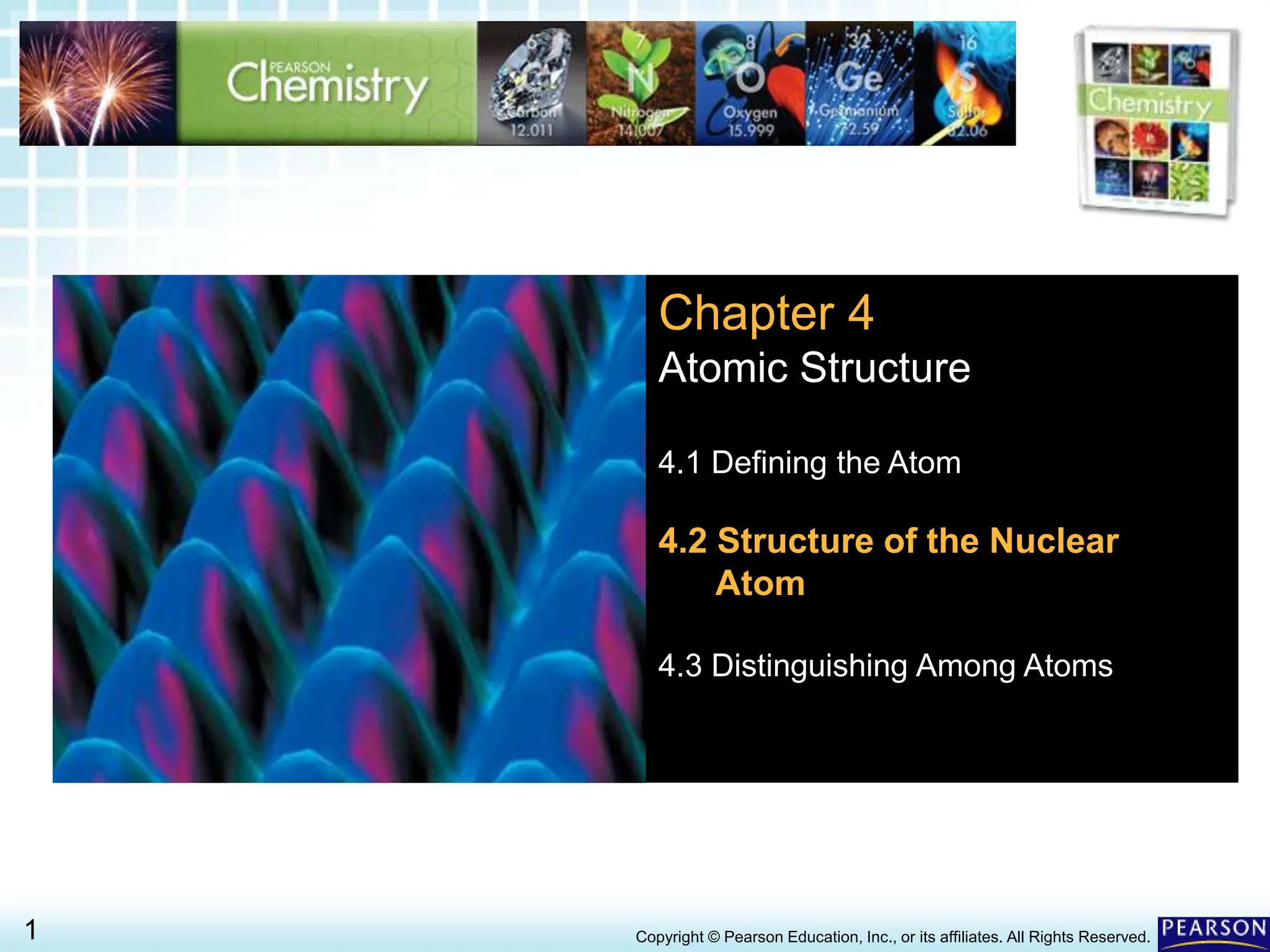Scientists determined the structure of the nuclear atom through experiments using subatomic particles. Rutherford's gold foil experiment showed that atoms have a small, dense nucleus containing positive charge and mass, with electrons orbiting the outside. This led to Rutherford's nuclear model of the atom, replacing the plum pudding model. The nuclear atom has a tiny nucleus containing protons and neutrons, with electrons occupying the much larger volume around it.





















































